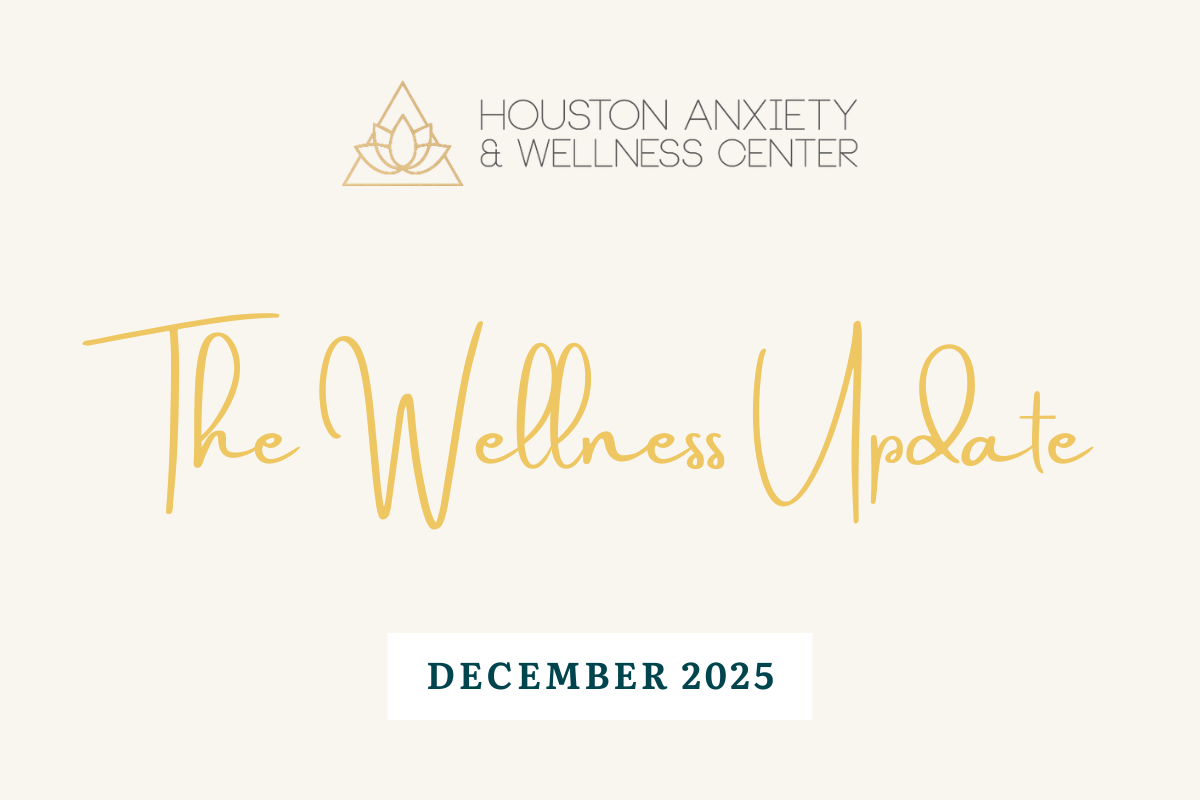
“I just want to be able to see the whole picture. But when I look in the mirror, my eyes go straight to the areas I hate.”
These are the words of someone living with Body Dysmorphic Disorder (BDD) - a mental health disorder that is more than just ordinary insecurities.
BDD involves a persistent and distressing preoccupation with one or more perceived flaws in appearance. These flaws are often invisible or minor to others. BDD can lead to engagement in repetitive, time-consuming behaviors such as:
- Mirror checking or complete mirror avoidance
- Excessive grooming or skin picking
- Reassurance seeking (Do I look okay? Looking at photos)
- Comparison making to others
- Efforts to conceal the area of concern (makeup, strategically using clothing, seeking cosmetic procedures).
Without intervention, these patterns can disrupt work, school, relationships, and overall emotional well-being.
Body Dysmorphic Disorder vs. Normal Insecurities
It is normal to have days where you don’t feel your best about your appearance. However, BDD is different. It is more severe, chronic, and impairing.
Key difference include:
- Persistent and intrusive appearance-related thoughts occurring daily and can last for hours
- Significant emotional distress and anxiety
- Areas of concern are often exaggerated or imagined
- Repetitive behaviors that are time consuming or disruptive
- Impairment in daily functioning
- Frequent pursuit of cosmetic procedures that typically provide temporary relief
Key Point: BDD is not just experiencing days of self-consciousness around your appearance. It’s a debilitating mental health condition that requires specialized treatment.
Body Dysmorphic Disorder vs. Eating Disorder
BDD and eating disorders can have a similar symptom profile, however, they are not the same.
Key Point: BDD is not about weight and shape control or dieting. It is about perceived defects in appearance.
How is Body Dysmorphic Disorder Diagnosed?
BDD falls under the diagnostic category of Obsessive-Compulsive and Related Disorders. While both BDD and OCD involve intrusive thoughts and repetitive behaviors, BDD focuses more on appearance related concerns. A diagnosis of BDD includes the following criteria:
- Preoccupation with one or more perceived flaws in physical appearance that not observable or appear minor to others
- Repetitive behaviors (e.g., mirror checking, excessive grooming) or mental acts (comparison making) in response to appearance concerns
- Significant impairment or distress in daily living
- Not better explained by concerns with body fat or weight (as in eating disorders)
BDD is often misdiagnosed or overlooked. A licensed mental health professional can provide a comprehensive evaluation to aid in diagnosing BDD.
Evidence-Based Treatments for BDD
Fortunately, there are several treatment approaches that have been effective in reducing the symptoms of BDD and enhancing quality of life.
1. Cognitive Behavioral Therapy (CBT)
CBT is the gold standard treatment for BDD and typically involves:
- Psychoeducation about the disorder
- Identifying and challenging unhelpful appearance-related thoughts
- Reducing compulsive behaviors like mirror checking and avoidance
- Exposure and Response Prevention (ERP) to gradually face appearance-related fears without engaging in compulsive behaviors
2. Medication Management
While there are no FDA-approved medications for BDD, Selective Serotonin Reuptake Inhibitors (SSRIs) - such as fluoxetine (Prozac) or sertraline (Zoloft) - are commonly prescribed SSRIs are effective in reducing obsessive thoughts, compulsive behaviors, and distress.
Management Strategies: Practice Steps You Can Take
Professional treatment is essential, but these self-help strategies can complement therapy.
Build Awareness
- Track triggers, thoughts, and behaviors in a journal or mental health app to recognize patterns.
Limit Mirror Time
- Limit mirror checking to specific times or purposes (hygiene, dressing)
- Avoid magnifying mirrors or harsh lighting
- Practice neutral observation without judgement
Reduce Social Media Use
- Unfollow or mute accounts that trigger self-comparison and/or self-criticism
- Limit daily usage
- Follow body-neutral health accounts that promote body acceptance
Engage in Values-Based Activities
- Reconnect with hobbies unrelated to appearance (reading, crafts, music)
- Spend time with friends and family who value you for who you are
Practice Self Compassion
- Self-criticism fuels BDD. Replace unhelpful thoughts with supportive self-talk, even on difficult days.
- Recovery is not about perfection - it is about patience and persistence.
Final Thoughts
BDD is more than just feeling bad about your appearance - it is debilitating and can impact every aspect of your life. With the right treatment, recovery is possible.
If you or someone you know is struggling, reach out to a mental health professional experienced in treating BDD. You don’t have to face this alone.
At the Houston Anxiety and Wellness Center, our trained professionals provide compassionate, evidence-based care to help you break free from BDD. We understand that recovery is a journey, and we are here to walk alongside you every step of the way.
Privacy Notice: By providing your email, you understand this resource is educational only and doesn't establish a therapeutic relationship. We use Flodesk (non-HIPAA compliant) to deliver this content and general practice updates. Your email will not be shared with third parties.
“I just want to be able to see the whole picture. But when I look in the mirror, my eyes go straight to the areas I hate.”
These are the words of someone living with Body Dysmorphic Disorder (BDD) - a mental health disorder that is more than just ordinary insecurities.
BDD involves a persistent and distressing preoccupation with one or more perceived flaws in appearance. These flaws are often invisible or minor to others. BDD can lead to engagement in repetitive, time-consuming behaviors such as:
- Mirror checking or complete mirror avoidance
- Excessive grooming or skin picking
- Reassurance seeking (Do I look okay? Looking at photos)
- Comparison making to others
- Efforts to conceal the area of concern (makeup, strategically using clothing, seeking cosmetic procedures).
Without intervention, these patterns can disrupt work, school, relationships, and overall emotional well-being.
Body Dysmorphic Disorder vs. Normal Insecurities
It is normal to have days where you don’t feel your best about your appearance. However, BDD is different. It is more severe, chronic, and impairing.
Key difference include:
- Persistent and intrusive appearance-related thoughts occurring daily and can last for hours
- Significant emotional distress and anxiety
- Areas of concern are often exaggerated or imagined
- Repetitive behaviors that are time consuming or disruptive
- Impairment in daily functioning
- Frequent pursuit of cosmetic procedures that typically provide temporary relief
Key Point: BDD is not just experiencing days of self-consciousness around your appearance. It’s a debilitating mental health condition that requires specialized treatment.
Body Dysmorphic Disorder vs. Eating Disorder
BDD and eating disorders can have a similar symptom profile, however, they are not the same.
Key Point: BDD is not about weight and shape control or dieting. It is about perceived defects in appearance.
How is Body Dysmorphic Disorder Diagnosed?
BDD falls under the diagnostic category of Obsessive-Compulsive and Related Disorders. While both BDD and OCD involve intrusive thoughts and repetitive behaviors, BDD focuses more on appearance related concerns. A diagnosis of BDD includes the following criteria:
- Preoccupation with one or more perceived flaws in physical appearance that not observable or appear minor to others
- Repetitive behaviors (e.g., mirror checking, excessive grooming) or mental acts (comparison making) in response to appearance concerns
- Significant impairment or distress in daily living
- Not better explained by concerns with body fat or weight (as in eating disorders)
BDD is often misdiagnosed or overlooked. A licensed mental health professional can provide a comprehensive evaluation to aid in diagnosing BDD.
Evidence-Based Treatments for BDD
Fortunately, there are several treatment approaches that have been effective in reducing the symptoms of BDD and enhancing quality of life.
1. Cognitive Behavioral Therapy (CBT)
CBT is the gold standard treatment for BDD and typically involves:
- Psychoeducation about the disorder
- Identifying and challenging unhelpful appearance-related thoughts
- Reducing compulsive behaviors like mirror checking and avoidance
- Exposure and Response Prevention (ERP) to gradually face appearance-related fears without engaging in compulsive behaviors
2. Medication Management
While there are no FDA-approved medications for BDD, Selective Serotonin Reuptake Inhibitors (SSRIs) - such as fluoxetine (Prozac) or sertraline (Zoloft) - are commonly prescribed SSRIs are effective in reducing obsessive thoughts, compulsive behaviors, and distress.
Management Strategies: Practice Steps You Can Take
Professional treatment is essential, but these self-help strategies can complement therapy.
Build Awareness
- Track triggers, thoughts, and behaviors in a journal or mental health app to recognize patterns.
Limit Mirror Time
- Limit mirror checking to specific times or purposes (hygiene, dressing)
- Avoid magnifying mirrors or harsh lighting
- Practice neutral observation without judgement
Reduce Social Media Use
- Unfollow or mute accounts that trigger self-comparison and/or self-criticism
- Limit daily usage
- Follow body-neutral health accounts that promote body acceptance
Engage in Values-Based Activities
- Reconnect with hobbies unrelated to appearance (reading, crafts, music)
- Spend time with friends and family who value you for who you are
Practice Self Compassion
- Self-criticism fuels BDD. Replace unhelpful thoughts with supportive self-talk, even on difficult days.
- Recovery is not about perfection - it is about patience and persistence.
Final Thoughts
BDD is more than just feeling bad about your appearance - it is debilitating and can impact every aspect of your life. With the right treatment, recovery is possible.
If you or someone you know is struggling, reach out to a mental health professional experienced in treating BDD. You don’t have to face this alone.
At the Houston Anxiety and Wellness Center, our trained professionals provide compassionate, evidence-based care to help you break free from BDD. We understand that recovery is a journey, and we are here to walk alongside you every step of the way.
Recent Posts

Finding Hope in the Mess: A Family Guide to the New Year
Tired of rigid resolutions? Learn the science of hope and use our Family Vision Board Guide to reconnect, regulate, and imagine a meaningful 2026 together.

Create Your Best Year Yet: The Family Vision Board Quick-Start Guide
Reflect, reconnect, and imagine your family's year ahead! Download this simple, meaningful quick-start guide to create your Family Vision Board for 2026.


